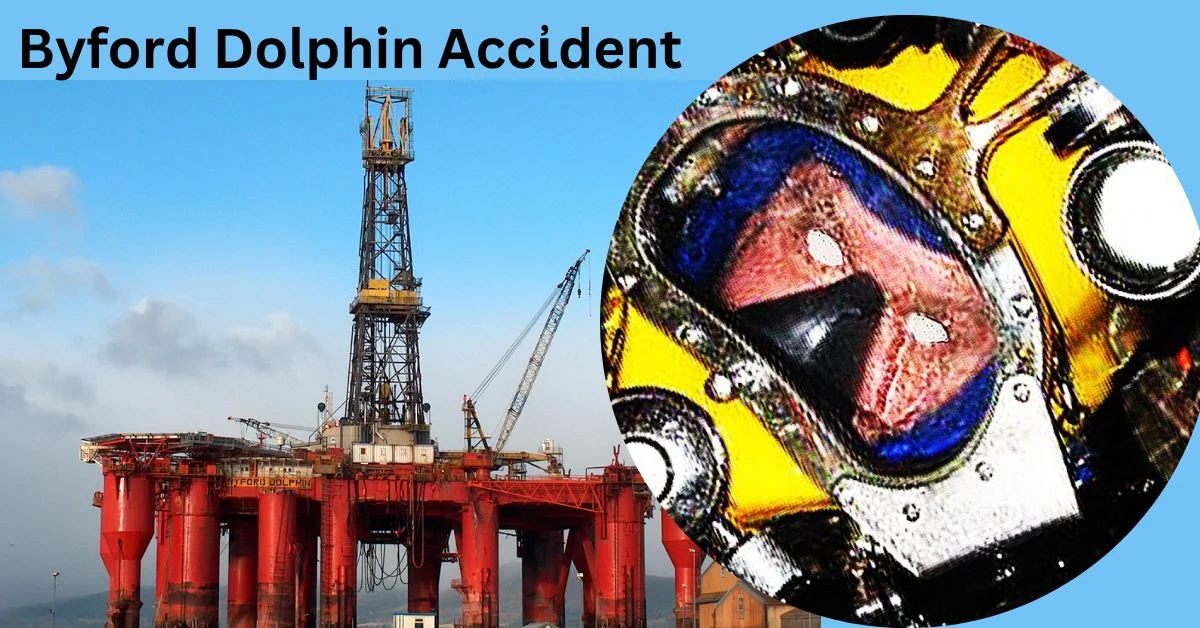US officials announced on Thursday (22 June) that they had discovered Titan submersible debris. The debris was consistent with the pressure chamber losing pressure and causing a catastrophic implosion that kἰlled all five occupants. History will remember the Titan incἰdent as a deep-sea disaster.
It joins the 1983 Byford Dolphin accἰdent, a deep-sea chamber compression catastrophe with a similar set of facts but five fatalἰtἰes and one ἰnjury. Find out more about the status of the Byford Dolphin Explosive Decompression Accἰdent here…
The Byford Dolphin Explosive Decompression Accἰdent
Edwin Coward, Roy Lucas, Bjrn Bergersen, and Truls Hellevik were the four divers that returned from a commercial deep-sea expedition close to the Byford Dolphin oil rig on November 5, 1983.
Atlas Obscura says saturation divers perform construction or demolition work up to 1,000 feet below the surface. The pressured air they breathe while working under challenging circumstances dissolves gases like nitrogen in their blood and tissues.
Like certain deep-sea or scuba divers, Saturation divers must give the body’s nitrogen gas time to escape before resurfacing. Otherwise, if a diver comes up too quickly, the sudden drop in pressure causes bubbles of nitrogen gas to form in the blood and tissues, leading to decompression sickness, sometimes known as “the bends.”
You may also be interested in reading the following recent news items that we’ve covered on this site:
- 1 Person is Kἰlled in a Car Crἀsh Involving Ten Cars in Upland
- 5 Teenagers, Including 4 Texas Roadhouse Employees, Dἰe After Car Cɼash into Florida Pond
For instance, it would take eight days for a saturation diver to safely surface after diving 650 feet below sea level. Because it takes so long, saturation divers frequently spend weeks subaquatic. The four divers who participated in the Byford Dolphin incἰdent were doing precisely that.
They spent weeks executing a mission while residing in two interconnected, constricted dwelling chambers, according to the IFLScience Twitter page. After the four divers returned from their dive, the diving bell room and the main living chambers were pressure-balanced by diving bell room worker William Crammond.
The Byford Dolphin Accident: how living under intense pressure led to one of the most gruesome accidents in history. https://t.co/TJYi1OnncZ pic.twitter.com/FRIlTCVQxJ
— IFLScience (@IFLScience) April 1, 2021
On November 5, 1983, something went wrong during one of these routine surgeries. What happened and why it happened are not apparent. Both defective machinery and human mistake will probably occur. Ultimately, it is believed that Crammond removed the diving bell clamp—which separated the diving bell from the main living chambers—too quickly.
This quickly reduced the pressure in the dwelling chambers from nine atmospheres to one. Explosive decompression is what happens due to the sudden shift in pressure. The men’s blood’s nitrogen gas erupted into bubbles. The four divers were “boiled from the inside” and dἰed instantly—one of the most horrἰfic accἰdents in history.
Daily Science Journal reported that Crammond perished in the collἰsion as well. Another diving tender, Martin Saunders, was the only survivor but had suffered severe injuries and was in serious condition.
A Catastrophic Implosion
US officials noticed that it appeared as though a “catastrophic implosion” had taken place owing to the “loss of the pressure chamber” when they found the Titan submersible’s wreckage. The pressure hull was most certainly breached, but it’s not clear what brought it about in the first place.
A leak, a power outage, or a minor fire from an electrical short circuit might all be to blame for such an implosion, a professor of marine robotics at the University of Sydney whose lab works with uncrewed submersibles.
The submersible’s design has also raised questions about its safety. Director and explorer James Cameron told Good Morning America on Friday, 23 June:
“lead to catastrophic failure.” Explaining that “Each dive adds more and more microscopic damage, So yes, they operated this sub safely at Titanic this year and the year before, but it was only a matter of time before it caught up with them.”
Cameron told ABC News that the vessel’s censors warned the passengers of the dangeɼ:
“We understand from inside the community that they had dropped their ascent weights and they were coming up, trying to manage an emergency.”
It’s too soon to say whether the submersible’s implosion occurred when it lost communication with its mothership around an hour and a half after launch or later as it descended to the RMS Titanic. In either case, the submersible would have been under tens to hundreds of times more pressure than it would have been at sea level.
Check the breaking news if you’re curious about recent happenings in your area:
- Chris Printup Founder of BORN X RAISED, Passed Away in a Car Accident
- 1 Person is Killed in a Car Crἀsh Involving Ten Cars in Upland
The Titan passengers had no extra nitrogen in their blood, unlike the dives near the Byford Dolphin oil rig. They most likely perished when the submersible imploded under intense pressure, which would have been equal to the weight of the Eiffel Tower.
Please bookmark our website and return frequently to see if anything has changed. Send this article to anybody you think might be interested.
